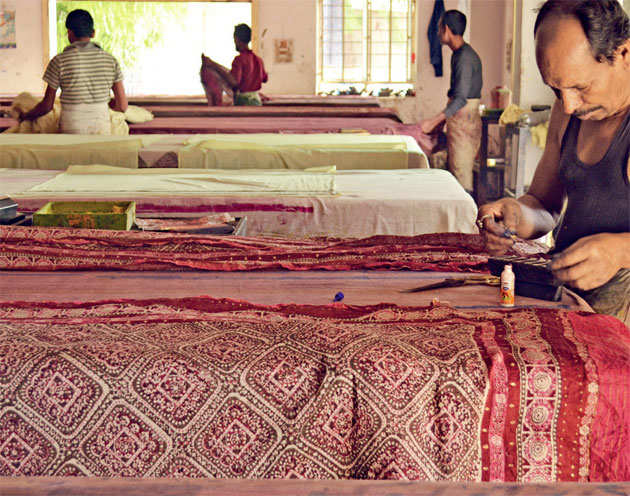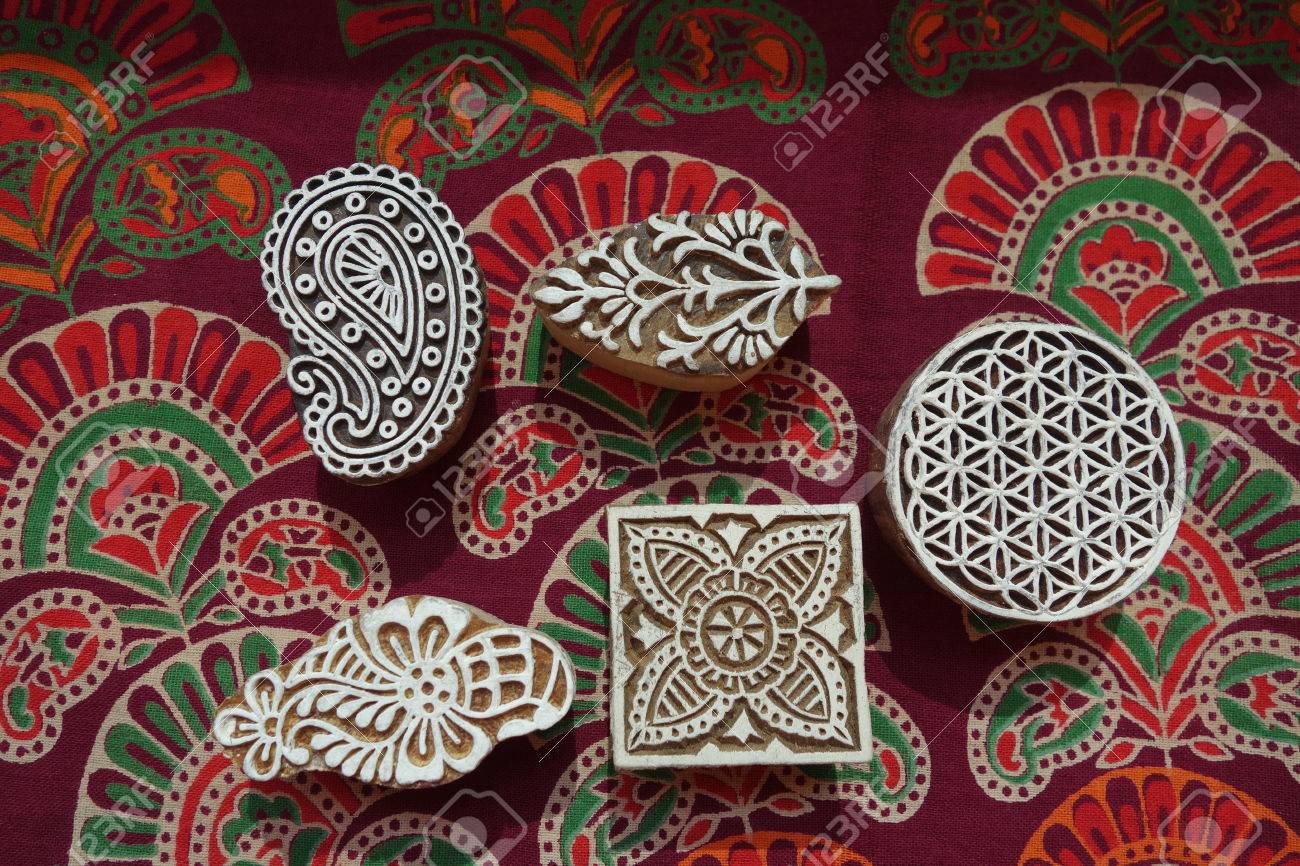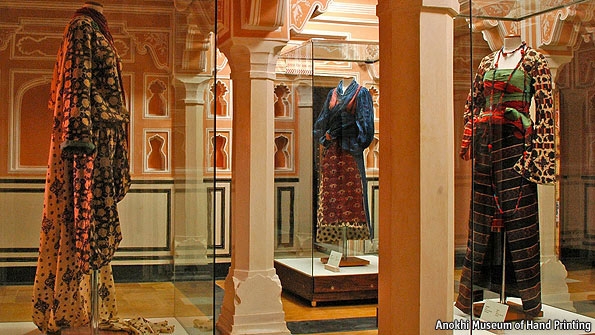An insight into block print
Block printing is an age-old art form that has become a major source of fashion in India. It holds an archaic old-world charm to it and block-printed textiles are popular as Indian specialty all around the globe. Block printing is the process of using carved blocks mostly wooden to imprint an image on fabric or paper. It is one of the most ancient printing methods used. It is also referred to as “relief painting” since the ink leaves a slightly raised texture on the fabric or paper. Earlier, block prints were used to print text on books whereas today it is extensively used to create various designs on fabric. Block printing by hand is capable of yielding highly artistic results. An intricate design created by human hands are always very special.
History
The history of Block Print goes back to over thousands of years. Believed to have originated in East Asia, this technique was practiced in China as early as 2nd Century C.E. One of the earliest records of block print can be traced back to 220 C.E. Images and texts were carved on wooden blocks and printed on silk fabrics. In the 600 C.E this method was used to print religious texts, calendars, calligraphy etc. Initially black ink was used followed by vermilion. China wasn’t the only place to have block printing. Ukiyo-e is a type of Japanese art which gained popularity from 17th to 19th century. One of the world’s most popular images was created out of wood block printing- The Great Wave off Kanagawa by Hokusai.

Block printing in India
While printing designs on fabric originated in China, it was in India where hand block printed fabrics reached its highest visual expression. The Bagru village which is 30 miles outside of the pink city(Jaipur) in Rajasthan is known for its dense concentration of textile artisans. Chippa Mohalla is the main area in Bagru where dyeing and block printing is predominantly done. This place is not only famous for the block printing art but also for the production of natural dyes. The Bagru artisans have kept alive this printing tradition for three centuries. In this printing village of Rajasthan, one can find vibrantly printed fabrics hung from buildings everywhere.

The art of block printing flourished during the 12th century in Rajasthan when the art received a royal patronage from the kings of that era. The art has been passed down over generations through the families and communities. Bagru artisans excel in mud resist (dabu) block prints and making of natural dyes from vegetables.
Steps involved
Though Block printing may look like an easy process there as various steps involved in bringing out the intricate designs as colorful prints on the fabric. Block carving, making of dyes, treating of fabrics and printing are the four major steps involved.
Carving: Wooden blocks called “bunta” made out of sycamore, mango or pear wood are used. The base has to be flat with a smooth finish. The desired designs are drawn on the plain surface and meticulously carved out by skilled artisans using a hammer and chisel. Outlines are first carved out and the carver then focuses on the finer details. Since wood has a tendency to wear out over time the finer details on the block are finished off with strips of brass or copper built in edgewise into the surface of the block to give the delicate designs more definition. This method is called coppering. Each block is made with a handle and several small holes to release air and excess dye. The blocks are then soaked in mustard oil for ten to fifteen days before use to soften the grains.


Dyes: Indian block printed textiles are in high demand and one major reason for it being the natural dyes used for printing. Vegetable dyes are eco-friendly in nature. Dyes are obtained from pomegranate skin, madder root, turmeric, rusted iron, barks, vinegar, slaked lime and indigo is extracted from indigo bush found throughout India. Napthol dyes and discharge dyes are also used.

Treating of fabrics: The fabric to be used for block printing is first washed thoroughly to remove all the starch. It also undergoes a bleaching process after which it is completely dried and dyed in the desired colour. The craftsmen will lay the fabric on a printing table and stretch it out completely to remove the creases.
Printing: Printing is always done from left to right. The craftsman dips the block into the dye and applies it on the fabric giving uniform pressure all over the block. A strong slamming action using the fist on the handle’s back helps in getting a uniform impression. The process is repeated along the length and breadth of the fabric. Once the printing process is completed fine saw dust is sprinkled on the wet ink to prevent the designs from smudging and to seal the prints. The fabric is then allowed to dry in the sun. The final outcome of this intricate labour is the timeless beauty.

Styles of Block printing
The most common types of Block printing are ‘Bagru’ and ‘Dabu’. Bagru is done by printing dark or coloured motifs on a cream or dyed background. This process is widely used with natural colours .The second style is the Dabu style, which consists of light coloured motifs on a darker background. To achieve the dark background, a dark mud is used to block print the pattern. When they dye the fabrics, the motifs covered with the mud print remain uncoloured while the rest of the fabric takes the hue of the dye.
Then came the currently famous Ajrakh prints. The Ajrakh printing technique is found in Anjar and Dhamadka in Kutch. The most prominently used colours are Red, Blue, Black and White.

Patterns and fabric used
The Bagru print extensively uses geometric shapes known as kangura (Triangle) and leher (Waves), where as some legendary artisans use floral and leaf motifs . The material which was used during the earlier times was cotton .The dye and prints were more prominent and beautiful in cotton material . Later linen fabrics were also used . Now the sarees are made in so many different materials the block prints are being carved and stamped on different kind of materials . But my personal preference will always be on a cotton or linen saree. What’s more elegant than a cotton or linen light weight saree with vibrant colours and exquisite patterns of Bagru or Dabu hand printed on them.

Major hubs in India
Indian block prints are popularly known for their intricate designs are organic dyes and hence are always in demand. The predominant areas that specialize in this art are Bagru, Ahmedabad, Pethapur, Farukhabad and Sanganer. These areas are from the states of Rajasthan and Gujarat. The Anokhi museum in Jaipur displays a varied selection of block printed textiles along with images, tools used and related objects, all chosen to provide an in-depth look into the complexity of this ancient tradition.

Block printed textiles in home decor
Block printed fabrics have become an indispensable trend and we can see a touch of the art in every home nowadays from bed covers, cushions, canopied light bulbs, runners and even curtains.

Reference:
